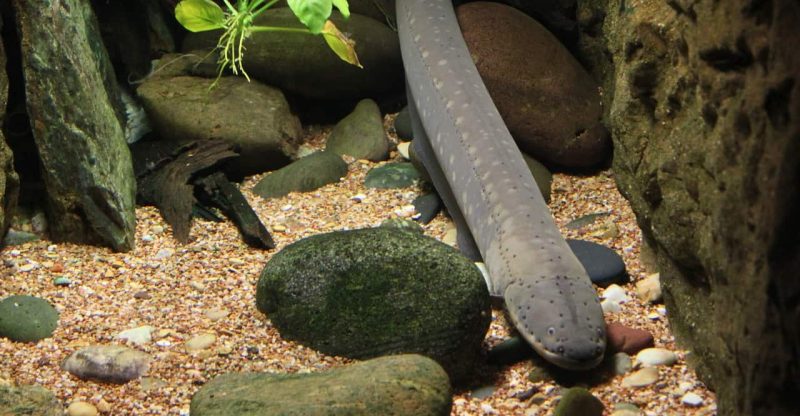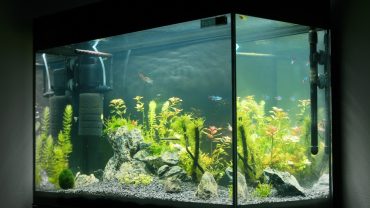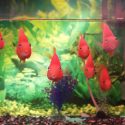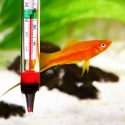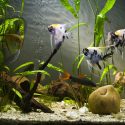Which Is The Best Substrate For Fish Tank?
The type of substrate you choose for your fish tank depends on the type of fish you plan to keep, your personal preferences, and whether you are planning to add plants to your aquarium.
Good quality aquarium substrate should look good, maintain water quality and ensure your fish are happy and healthy. Here’s a guide on how to choose the best substrate for your fish tank from those available in the UK.
What To Consider When Choosing Substrate For A Fish Tank
A. Type of Substrate
There are many types of substrates for fish tanks. Here are the most common ones.
- Gravel – this is the most common aquarium substrate. It comes in different colours, sizes and shapes. Gravel is easy to find, you can get it in a variety of colours, and it’s good for most types of fish and some plants.
- Sand – this is the next most common fish tank substrate. It’s especially ideal for marine fish tanks. It allows bottom-dwelling fish to burrow and it’s easy to clean.
- Soil – this is the best substrate for planted fish tanks. Soil provides an excellent hold for plants and delivers the nutrients they need. It also adds a natural look to the fish tank.
Other less common substrates include large pebbles, peat, and vermiculite.
Note that you can use two types of substrate in one aquarium. For instance, you can have soil at the bottom for plants to grow on and a layer of sand at the top for the fish to burrow in.
You can also forgo the substrate completely and create a bare bottomed fish tank, though it presents several challenges in water chemistry and fish health.
B. Inert Substrate
Unless you intentionally want a substrate that affects the chemistry of water, make sure the substrate you get is inert or neutral.
This means it doesn’t change the quality or chemistry of water such as pH and chemical composition.
This ensures your fish tank stays stable and your fish are healthy.
That said, some substrates are meant to change water quality. For instance, an aragonite sand substrate helps maintain the pH of water. Peat substrate is great for lowering water pH for certain types of fish.
Other substrates like vermiculite release nutrients for plants.
C. Planted vs. Non-planted Aquarium
If you have a planted aquarium or you are planning for one, get a soil substrate.
Gravel and sand look good but they don’t provide the nutrients plants need. They are suitable for non-planted aquariums.
Soil, on the other hand, carries natural minerals and usually has added fertiliser. It also provides hold for plant roots.
D. Type of Fish
The kind of fish you have or plan to keep matters a great deal when choosing the best substrate for your fish tank.
If you are keeping saltwater fish, then a fine sand substrate makes the most sense. A buffering substrate like aragonite sand is especially ideal.
If you have small bottom-dwelling fish like barbells, you want a sand or fine gravel substrate that’s easy for the fish to dig through as they search for food.
For larger bottom-dwelling fish like catfish, coarse gravel or small pebbles make for a good substrate.
E. Colour and Aesthetics
This one is up to you. As long as the water quality is good, fish will adapt to any substrate colour. Choose the one that you like most.
Most fish tank owners prefer natural colours like brown. It gives the fish tank a natural look and allows the colours of the fish to really pop.
Best Substrate for Fish Tank: Top 5 Reviews
1. JBL Sansibar 10 kg, Dark Substrate For Freshwater And Saltwater Aquariums

The JBL Sansibar is a universal substrate that’s suitable for just about any kind of fish tank, both saltwater and freshwater.
It’s also suitable for plants, amphibians and other invertebrates in vivariums and terrariums.
The JBL Sansibar substrate consists of fine and round sand grains measuring between 0.2mm and 0.6mm.
The compact substrate provides a suitable medium for plant roots to take hold and for bottom-dwelling fish to burrow.
It also makes it easier to keep the fish tank clean since the fine sand prevents waste from settling deep into the substrate.
The sand is inert and will not change your fish tank’s water chemistry.
When you first add the sand to the fish tank, it makes the water cloudy, but it’ll settle after a day or two. To reduce the cloudiness, wash the sand before putting it in the tank.
The easiest way to do it is pouring the sand into a pillow case or some other fine fabric enclosure and then rinsing the dust away with a hose. When the water runs clear, it’s ready to use.
Note that because of how fine it is, the JBL Sansibar substrate can be an issue in a tank with large bottom-dwelling fish. They’ll easily stir it up, clouding the water and clogging the filters.
Most people opt for the dark JBL Sansibar substrate, though other colours are available including white, grey, orange, and red.
What we like about it:
- Ideal for saltwater and freshwater tanks.
- Can be used in planted and non-planted aquariums.
- Available in multiple colours.
2. Fluval Plant & Shrimp Stratum Aquarium Substrate
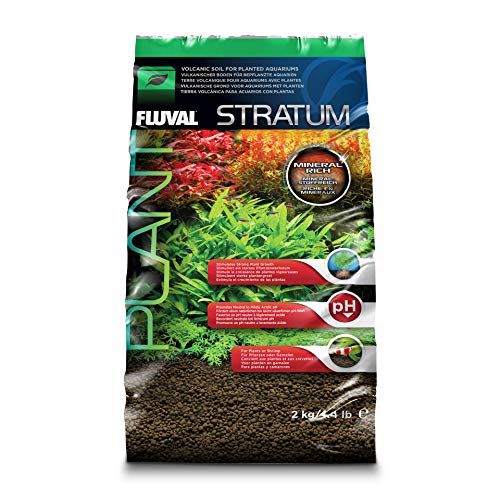
The Fluval Stratum substrate is our top recommendation for planted fish tanks. It is specially designed to boost plant growth in freshwater aquariums.
The fine substrate is also great for shrimp fish tanks.
Fluval Stratum is composed of rich volcanic soil containing nutrients for plants. The soil is compressed into small round and highly porous balls.
Plant roots easily penetrate through the substrate, as do shrimp and small fish.
The porous nature of the Fluval Stratum substrate also boosts bacterial colonisation, which helps maintain the right water chemistry.
The Fluval Stratum soil substrate does not discolour the water. It can actually help prevent discoloration caused by driftwood in the water.
Fluval Stratum is not fully inert as it does add nutrients to the water. But it doesn’t drastically change your water’s chemistry.
It’s actually beneficial for the water because it helps maintain a neutral or slightly low pH, which is perfect for plant and shrimp freshwater tanks.
What we like about it:
- Great for plants.
- No discoloration.
- Promotes good bacterial growth.
- Ideal for shrimp and small fish like barbells.
3. Tetra Active Aquarium Substrate

Tetra Active is another good pick if you are planning a planted aquarium. The substrate consists of clay-based soil granules rich in minerals and nutrients for your plants.
Tetra Active is light enough to allow plant roots to grow through it and small fish to burrow in it. It’s also compact enough to provide a strong hold for plants.
It also provides a great habitat for good bacteria to grow.
The Tetra Active substrate does not discolour water, but rinse it before adding it to the tank to prevent cloudiness.
You can use it on its own, but the manufacturer recommends using it as a topper above the Tetra Complete substrate (reviewed below).
If you use it on its own, feel free to top it with a layer of sand or gravel for your fish. That way, you have a substrate that’s great for both plants and fish.
What we like about it:
- Great for planted fish tanks.
- Safe for shrimp and small fish.
- No discoloration.
4. Tetra Complete Substrate

Tetra recommends using this as the base substrate in your fish tank. You can then top it with Tetra Active or any other substrate like sand or gravel.
Using Tetra Complete and Tetra Active provides the best growing environment for your plants.
Like Tetra Active, Tetra Complete is designed specifically for planted aquariums. It consists of natural peat enriched with nutrients and minerals like iron.
It allows plants to spread healthy and strong roots, and results in green and lush leaves.
Tetra Complete is fairly heavy and settles easily at the bottom of the tank without clouding or discolouring the water.
The manufacturer recommends adding a 2-4cm of Tetra Complete at the base of the tank and layering it with 4cm of Tetra Active on top.
Of course, you can also use it on its own. It’ll still work fine.
However, if you have small fish that like to burrow into the substrate, we highly recommend adding a layer of sand on top to keep the fish from disturbing the soil.
What we like about it:
- Natural humus and added minerals allow plants to thrive.
- No discoloration.
- Works well with other substrates like sand, gravel or soil.
5. Blue Treasure 5kg Coral Sand Marine Aquarium Fish Tank Substrate

The Blue Treasure coral sand substrate is our top pick for saltwater fish tanks. It provides the closest environment to a natural habitat for marine fish.
The Blue Treasure substrate consists of 100% natural coral sand with a porous structure that allows bacterial growth.
It’s also fine enough to allow fish to dig for food in it.
The Blue Treasure sand substrate is rich in calcium carbonate, which helps maintain the relatively high pH of saltwater fish tanks.
You can also use the Blue Treasure coral sand in a freshwater aquarium containing African Cichlids and other freshwater fish that like a high pH environment such as freshwater puffers and livebearers.
What we like about it:
- Great for marine fish tanks.
- Can also be used in high pH freshwater aquariums.
- Helps buffer water pH.

